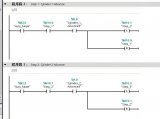批量插入功能是我們?nèi)粘9ぷ髦斜容^常見(jiàn)的業(yè)務(wù)功能之一,今天來(lái)一個(gè) MyBatis 批量插入的匯總篇,同時(shí)對(duì) 3 種實(shí)現(xiàn)方法做一個(gè)性能測(cè)試,以及相應(yīng)的原理分析。
先來(lái)簡(jiǎn)單說(shuō)一下 3 種批量插入功能分別是:
- 循環(huán)單次插入;
- MP 批量插入功能;
- 原生批量插入功能。
準(zhǔn)備工作
開(kāi)始之前我們先來(lái)創(chuàng)建數(shù)據(jù)庫(kù)和測(cè)試數(shù)據(jù),執(zhí)行的 SQL 腳本如下:
------------------------------
--創(chuàng)建數(shù)據(jù)庫(kù)
------------------------------
SETNAMESutf8mb4;
SETFOREIGN_KEY_CHECKS=0;
DROPDATABASEIFEXISTS`testdb`;
CREATEDATABASE`testdb`;
USE`testdb`;
------------------------------
--創(chuàng)建user表
------------------------------
DROPTABLEIFEXISTS`user`;
CREATETABLE`user`(
`id`int(11)NOTNULLAUTO_INCREMENT,
`name`varchar(255)CHARACTERSETutf8mb4COLLATEutf8mb4_binNULLDEFAULTNULL,
`password`varchar(255)CHARACTERSETutf8mb4COLLATEutf8mb4_binNULLDEFAULTNULL,
`createtime`datetimeNULLDEFAULTCURRENT_TIMESTAMP,
PRIMARYKEY(`id`)USINGBTREE
)ENGINE=InnoDBAUTO_INCREMENT=6CHARACTERSET=utf8mb4COLLATE=utf8mb4_binROW_FORMAT=Dynamic;
------------------------------
--添加測(cè)試數(shù)據(jù)
------------------------------
INSERTINTO`user`VALUES(1,'趙云','123456','2021-09-101816');
INSERTINTO`user`VALUES(2,'張飛','123456','2021-09-101828');
INSERTINTO`user`VALUES(3,'關(guān)羽','123456','2021-09-101834');
INSERTINTO`user`VALUES(4,'劉備','123456','2021-09-101841');
INSERTINTO`user`VALUES(5,'曹操','123456','2021-09-101802');
SETFOREIGN_KEY_CHECKS=1;
數(shù)據(jù)庫(kù)的最終效果如下:

1.循環(huán)單次插入
接下來(lái)我們將使用 Spring Boot 項(xiàng)目,批量插入 10W 條數(shù)據(jù)來(lái)分別測(cè)試各個(gè)方法的執(zhí)行時(shí)間。
循環(huán)單次插入的(測(cè)試)核心代碼如下:
importcom.example.demo.model.User;
importcom.example.demo.service.impl.UserServiceImpl;
importorg.junit.jupiter.api.Test;
importorg.springframework.beans.factory.annotation.Autowired;
importorg.springframework.boot.test.context.SpringBootTest;
@SpringBootTest
classUserControllerTest{
//最大循環(huán)次數(shù)
privatestaticfinalintMAXCOUNT=100000;
@Autowired
privateUserServiceImpluserService;
/**
*循環(huán)單次插入
*/
@Test
voidsave(){
longstime=System.currentTimeMillis();//統(tǒng)計(jì)開(kāi)始時(shí)間
for(inti=0;inewUser();
user.setName("test:"+i);
user.setPassword("123456");
userService.save(user);
}
longetime=System.currentTimeMillis();//統(tǒng)計(jì)結(jié)束時(shí)間
System.out.println("執(zhí)行時(shí)間:"+(etime-stime));
}
}
運(yùn)行以上程序,花費(fèi)了 88574 毫秒,如下圖所示:

2.MP 批量插入
MP 批量插入功能核心實(shí)現(xiàn)類有三個(gè):UserController(控制器)、UserServiceImpl(業(yè)務(wù)邏輯實(shí)現(xiàn)類)、UserMapper(數(shù)據(jù)庫(kù)映射類),它們的調(diào)用流程如下:

注意此方法實(shí)現(xiàn)需要先添加 MP 框架,打開(kāi) pom.xml 文件添加如下內(nèi)容:
<dependency>
<groupId>com.baomidougroupId>
<artifactId>mybatis-plus-boot-starterartifactId>
<version>mybatis-plus-latest-versionversion>
dependency>
注意:mybatis-plus-latest-version 表示 MP 框架的最新版本號(hào),可訪問(wèn) https://mvnrepository.com/artifact/com.baomidou/mybatis-plus-boot-starter 查詢最新版本號(hào),但在使用的時(shí)候記得一定要將上面的 “mybatis-plus-latest-version”替換成換成具體的版本號(hào),如 3.4.3 才能正常的引入框架。
更多 MP 框架的介紹請(qǐng)移步它的官網(wǎng):https://baomidou.com/guide/
① 控制器實(shí)現(xiàn)
importcom.example.demo.model.User;
importcom.example.demo.service.impl.UserServiceImpl;
importorg.springframework.beans.factory.annotation.Autowired;
importorg.springframework.web.bind.annotation.RequestMapping;
importorg.springframework.web.bind.annotation.RestController;
importjava.util.ArrayList;
importjava.util.List;
@RestController
@RequestMapping("/u")
publicclassUserController{
@Autowired
privateUserServiceImpluserService;
/**
*批量插入(自定義)
*/
@RequestMapping("/mysavebatch")
publicbooleanmySaveBatch(){
Listlist=newArrayList<>();
//待添加(用戶)數(shù)據(jù)
for(inti=0;i1000;i++){
Useruser=newUser();
user.setName("test:"+i);
user.setPassword("123456");
list.add(user);
}
returnuserService.saveBatchCustom(list);
}
}
② 業(yè)務(wù)邏輯層實(shí)現(xiàn)
importcom.baomidou.mybatisplus.extension.service.impl.ServiceImpl;
importcom.example.demo.mapper.UserMapper;
importcom.example.demo.model.User;
importcom.example.demo.service.UserService;
importorg.springframework.beans.factory.annotation.Autowired;
importorg.springframework.stereotype.Service;
importjava.util.List;
@Service
publicclassUserServiceImplextendsServiceImpl<UserMapper,User>
implementsUserService{
@Autowired
privateUserMapperuserMapper;
publicbooleansaveBatchCustom(Listlist) {
returnuserMapper.saveBatchCustom(list);
}
}
③ 數(shù)據(jù)持久層實(shí)現(xiàn)
importcom.baomidou.mybatisplus.core.mapper.BaseMapper;
importcom.example.demo.model.User;
importorg.apache.ibatis.annotations.Mapper;
importjava.util.List;
@Mapper
publicinterfaceUserMapperextendsBaseMapper<User>{
booleansaveBatchCustom(Listlist) ;
}
經(jīng)過(guò)以上代碼實(shí)現(xiàn),我們就可以使用 MP 來(lái)實(shí)現(xiàn)數(shù)據(jù)的批量插入功能了,但本篇除了具體的實(shí)現(xiàn)代碼之外,我們還要知道每種方法的執(zhí)行效率,所以接下來(lái)我們來(lái)編寫 MP 的測(cè)試代碼。
MP 性能測(cè)試
importcom.example.demo.model.User;
importcom.example.demo.service.impl.UserServiceImpl;
importorg.junit.jupiter.api.Test;
importorg.springframework.beans.factory.annotation.Autowired;
importorg.springframework.boot.test.context.SpringBootTest;
importjava.util.ArrayList;
importjava.util.List;
@SpringBootTest
classUserControllerTest{
//最大循環(huán)次數(shù)
privatestaticfinalintMAXCOUNT=100000;
@Autowired
privateUserServiceImpluserService;
/**
*MP批量插入
*/
@Test
voidsaveBatch(){
longstime=System.currentTimeMillis();//統(tǒng)計(jì)開(kāi)始時(shí)間
Listlist=newArrayList<>();
for(inti=0;inewUser();
user.setName("test:"+i);
user.setPassword("123456");
list.add(user);
}
//MP批量插入
userService.saveBatch(list);
longetime=System.currentTimeMillis();//統(tǒng)計(jì)結(jié)束時(shí)間
System.out.println("執(zhí)行時(shí)間:"+(etime-stime));
}
}
以上程序的執(zhí)行總共花費(fèi)了 6088 毫秒,如下圖所示:

從上述結(jié)果可知,使用 MP 的批量插入功能(插入數(shù)據(jù) 10W 條),它的性能比循環(huán)單次插入的性能提升了 14.5 倍。
MP 源碼分析
從 MP 和循環(huán)單次插入的執(zhí)行時(shí)間我們可以看出,使用 MP 并不是像有些朋友認(rèn)為的那樣,還是循環(huán)單次執(zhí)行的,為了更清楚的說(shuō)明此問(wèn)題,我們查看了 MP 的源碼。
MP 的核心實(shí)現(xiàn)代碼是 saveBatch 方法,此方法的源碼如下:

我們繼續(xù)跟進(jìn) saveBatch 的重載方法:

從上述源碼可以看出,MP 是將要執(zhí)行的數(shù)據(jù)分成 N 份,每份 1000 條,每滿 1000 條就會(huì)執(zhí)行一次批量插入,所以它的性能要比循環(huán)單次插入的性能高很多。
那為什么要分批執(zhí)行,而不是一次執(zhí)行?別著急,當(dāng)我們看了第 3 種實(shí)現(xiàn)方法之后我們就明白了。
3.原生批量插入
原生批量插入方法是依靠 MyBatis 中的 foreach 標(biāo)簽,將數(shù)據(jù)拼接成一條原生的 insert 語(yǔ)句一次性執(zhí)行的,核心實(shí)現(xiàn)代碼如下。
① 業(yè)務(wù)邏輯層擴(kuò)展
在 UserServiceImpl 添加 saveBatchByNative 方法,實(shí)現(xiàn)代碼如下:
importcom.baomidou.mybatisplus.extension.service.impl.ServiceImpl;
importcom.example.demo.mapper.UserMapper;
importcom.example.demo.model.User;
importcom.example.demo.service.UserService;
importorg.springframework.beans.factory.annotation.Autowired;
importorg.springframework.stereotype.Service;
importjava.util.List;
@Service
publicclassUserServiceImplextendsServiceImpl<UserMapper,User>
implementsUserService{
@Autowired
privateUserMapperuserMapper;
publicbooleansaveBatchByNative(Listlist) {
returnuserMapper.saveBatchByNative(list);
}
}
② 數(shù)據(jù)持久層擴(kuò)展
在 UserMapper 添加 saveBatchByNative 方法,實(shí)現(xiàn)代碼如下:
importcom.baomidou.mybatisplus.core.mapper.BaseMapper;
importcom.example.demo.model.User;
importorg.apache.ibatis.annotations.Mapper;
importjava.util.List;
@Mapper
publicinterfaceUserMapperextendsBaseMapper<User>{
booleansaveBatchByNative(Listlist) ;
}
③ 添加 UserMapper.xml
創(chuàng)建 UserMapper.xml 文件,使用 foreach 標(biāo)簽拼接 SQL,具體實(shí)現(xiàn)代碼如下:
"1.0"encoding="UTF-8"?>
"-//mybatis.org//DTDMapper3.0//EN""http://mybatis.org/dtd/mybatis-3-mapper.dtd">
"com.example.demo.mapper.UserMapper">
"saveBatchByNative">
INSERTINTO`USER`(`NAME`,`PASSWORD`)VALUES
"list"separator=","item="item">
(#{item.name},#{item.password})
經(jīng)過(guò)以上步驟,我們?cè)呐坎迦牍δ芫蛯?shí)現(xiàn)的差不多了,接下來(lái)我們使用單元測(cè)試來(lái)查看一下此方法的執(zhí)行效率。
原生批量插入性能測(cè)試
importcom.example.demo.model.User;
importcom.example.demo.service.impl.UserServiceImpl;
importorg.junit.jupiter.api.Test;
importorg.springframework.beans.factory.annotation.Autowired;
importorg.springframework.boot.test.context.SpringBootTest;
importjava.util.ArrayList;
importjava.util.List;
@SpringBootTest
classUserControllerTest{
//最大循環(huán)次數(shù)
privatestaticfinalintMAXCOUNT=100000;
@Autowired
privateUserServiceImpluserService;
/**
*原生自己拼接SQL,批量插入
*/
@Test
voidsaveBatchByNative(){
longstime=System.currentTimeMillis();//統(tǒng)計(jì)開(kāi)始時(shí)間
Listlist=newArrayList<>();
for(inti=0;inewUser();
user.setName("test:"+i);
user.setPassword("123456");
list.add(user);
}
//批量插入
userService.saveBatchByNative(list);
longetime=System.currentTimeMillis();//統(tǒng)計(jì)結(jié)束時(shí)間
System.out.println("執(zhí)行時(shí)間:"+(etime-stime));
}
}
然而,當(dāng)我們運(yùn)行程序時(shí)卻發(fā)生了以下情況:

納尼?程序的執(zhí)行竟然報(bào)錯(cuò)了。
缺點(diǎn)分析
從上述報(bào)錯(cuò)信息可以看出,當(dāng)我們使用原生方法將 10W 條數(shù)據(jù)拼接成一個(gè) SQL 執(zhí)行時(shí),由于拼接的 SQL 過(guò)大(4.56M)從而導(dǎo)致程序執(zhí)行報(bào)錯(cuò),因?yàn)槟J(rèn)情況下 MySQL 可以執(zhí)行的最大 SQL(大小)為 4M,所以程序就報(bào)錯(cuò)了。
這就是原生批量插入方法的缺點(diǎn),也是為什么 MP 需要分批執(zhí)行的原因,就是為了防止程序在執(zhí)行時(shí),因?yàn)橛|發(fā)了數(shù)據(jù)庫(kù)的最大執(zhí)行 SQL 而導(dǎo)致程序執(zhí)行報(bào)錯(cuò)。
解決方案
當(dāng)然我們也可以通過(guò)設(shè)置 MySQL 的最大執(zhí)行 SQL 來(lái)解決報(bào)錯(cuò)的問(wèn)題,設(shè)置命令如下:
--設(shè)置最大執(zhí)行SQL為10M
setglobalmax_allowed_packet=10*1024*1024;
如下圖所示:

注意:以上命令需要在 MySQL 連接的客戶端中執(zhí)行。
但以上解決方案仍是治標(biāo)不治本,因?yàn)槲覀儫o(wú)法預(yù)測(cè)程序中最大的執(zhí)行 SQL 到底有多大,那么最普世的方法就是分配執(zhí)行批量插入的方法了(也就是像 MP 實(shí)現(xiàn)的那樣)。
當(dāng)我們將 MySQL 的最大執(zhí)行 SQL 設(shè)置為 10M 之后,運(yùn)行以上單元測(cè)試代碼,執(zhí)行的結(jié)果如下:

總結(jié)
本文我們介紹了 MyBatis 批量插入的 3 種方法,其中循環(huán)單次插入的性能最低,也是最不可取的;使用 MyBatis 拼接原生 SQL 一次性插入的方法性能最高,但此方法可能會(huì)導(dǎo)致程序執(zhí)行報(bào)錯(cuò)(觸發(fā)了數(shù)據(jù)庫(kù)最大執(zhí)行 SQL 大小的限制),所以綜合以上情況,可以考慮使用 MP 的批量插入功能。
編輯:金巧
-
SQL
+關(guān)注
關(guān)注
1文章
764瀏覽量
44128 -
程序
+關(guān)注
關(guān)注
117文章
3787瀏覽量
81038 -
代碼
+關(guān)注
關(guān)注
30文章
4788瀏覽量
68603 -
mybatis
+關(guān)注
關(guān)注
0文章
60瀏覽量
6713
原文標(biāo)題:MyBatis 批量插入數(shù)據(jù)的 3 種方法!
文章出處:【微信號(hào):DBDevs,微信公眾號(hào):數(shù)據(jù)分析與開(kāi)發(fā)】歡迎添加關(guān)注!文章轉(zhuǎn)載請(qǐng)注明出處。
發(fā)布評(píng)論請(qǐng)先 登錄
相關(guān)推薦
環(huán)路測(cè)試方法有哪幾種
直流無(wú)刷電機(jī)調(diào)速有幾種方法及應(yīng)用
stm32程序燒錄的幾種方法?
測(cè)量串聯(lián)電路的Q值有幾種方法
pwm脈寬調(diào)制的四種方法有哪些
產(chǎn)生脈沖信號(hào)有幾種方法

接地電阻的測(cè)量有哪幾種方法
改變異步電動(dòng)機(jī)的轉(zhuǎn)速有幾種方法
BUCK電路的CCM模式占空比,你知道哪幾種?
批量替換多個(gè)文件中特定字符串的3種方法

labview與sql數(shù)據(jù)庫(kù)連接5種方法
編寫PLC程序的7種方法





 MyBatis批量插入數(shù)據(jù)的3種方法你知道幾種
MyBatis批量插入數(shù)據(jù)的3種方法你知道幾種













評(píng)論